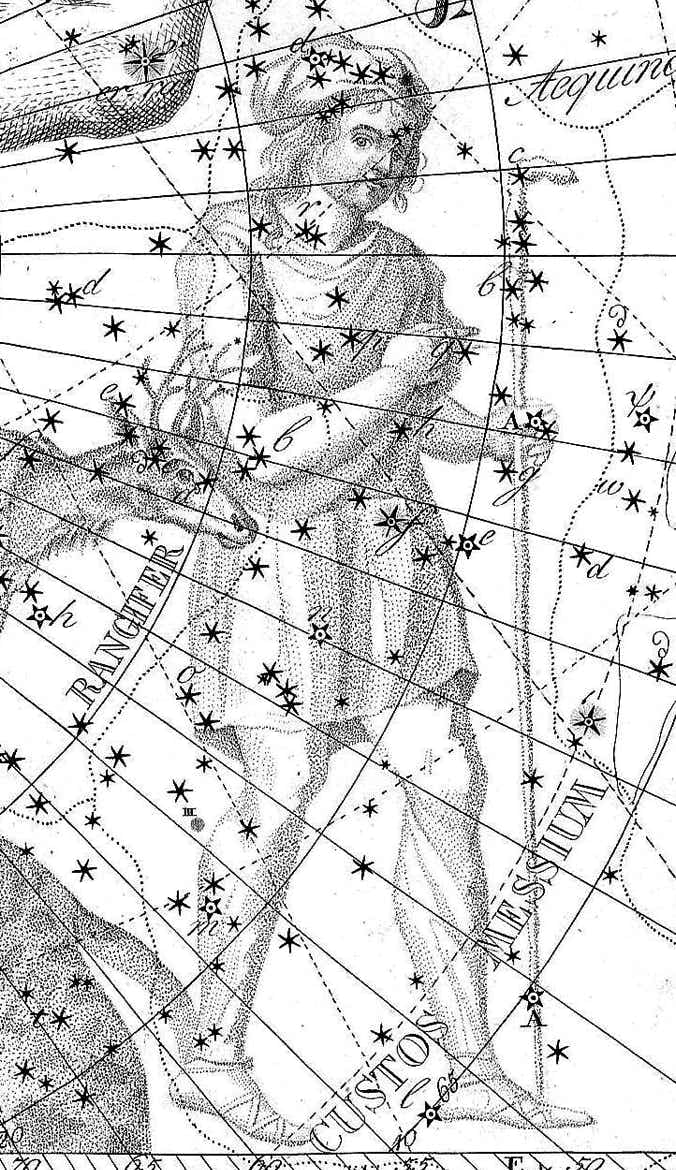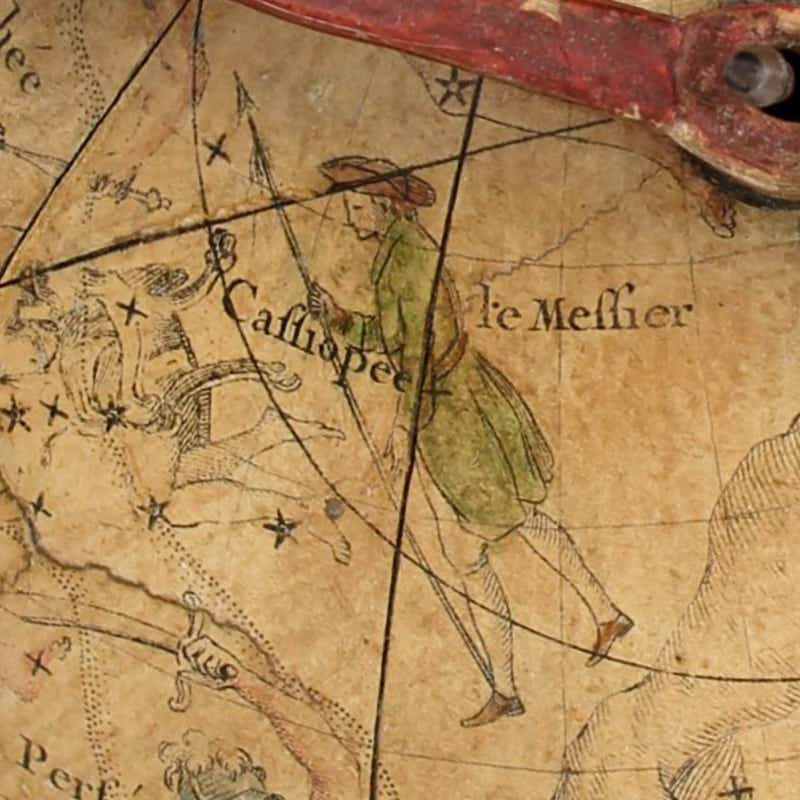
This far-northern constellation was introduced by the French astronomer Joseph Jérôme de Lalande (1732–1807) on his celestial globe of 1775, and was described by him in an accompanying pamphlet titled Explication des nouveaux globes céleste et terrestre (see this review from the Journal des Sçavans of 1776 November). The name Custos Messium is a punning reference to his countryman Charles Messier, the famed comet hunter, and in fact the constellation was often known simply as Messier, particularly in France. Its brightest star was the present-day 50 Cassiopeiae, of 4th magnitude.
Custos Messium lay between Cepheus and Camelopardalis in what is now northern Cassiopeia, next to another subsequently abandoned constellation, Rangifer the Reindeer. Lalande chose this previously anonymous area of sky because it was here that the comet of 1774 (now known as C/1774 P1) was first seen. The comet was extensively observed by Messier but, ironically, was not discovered by him – the discoverer in this case was actually another Frenchman, Jacques Laibats-Montaigne (1716–88).
The British scientist Thomas Young (1773–1829) renamed the figure the Vineyard Keeper on his chart of the northern hemisphere sky published in 1807 in A Course of Lectures on Natural Philosophy and the Mechanical Arts, but even this was not enough to broaden its appeal and it withered into obscurity.
However, it has not been entirely forgotten. In 2025 the IAU gave the name Custos to the star BE Camelopardalis (also known as HR 1155), slightly variable around magnitude 4.4.
Above: Custos Messsium, seen beside Rangifer the reindeer, another now-obsolete constellation, on Chart III of the Uranographia of Johann Bode (1801). He is shown as a rustic figure holding a shepherd’s crook in his left hand, while his right hand points enigmatically towards the feet of Cassiopeia (off the chart at right). Is there a hidden meaning in this gesture?
© Ian Ridpath. All rights reserved




